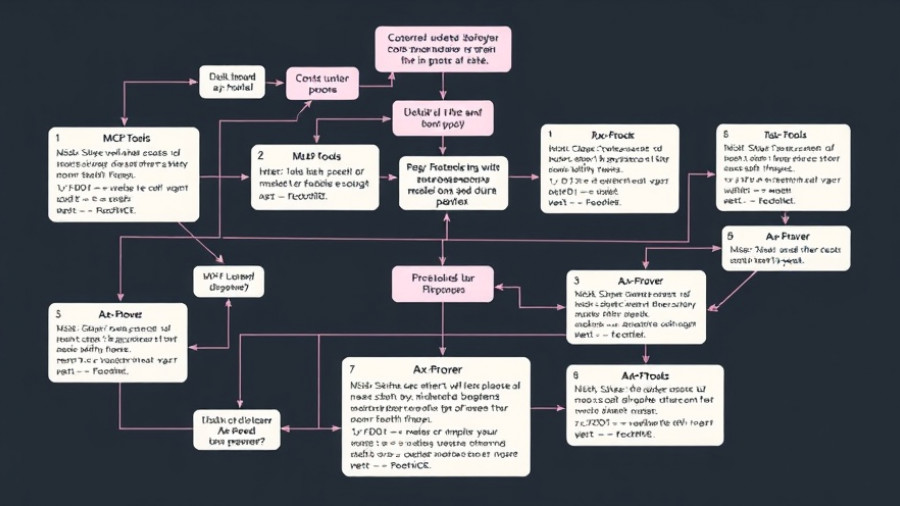
Unlocking the Power of Deep Reasoning AI: Google’s Revolutionary Deep Think
In the ever-evolving landscape of artificial intelligence, Google DeepMind’s latest release, Deep Think, represents a watershed moment. This advanced AI model is not just another incremental improvement in machine learning technology; it's a transformative approach that significantly enhances how machines process information. With its multi-agent reasoning capability, Deep Think is set to change the game for industries reliant on complex decision-making.
A Breakthrough in AI Reasoning
What truly sets Deep Think apart from traditional AI systems is its ability to operate through parallel reasoning rather than linear problem-solving. Conventional AIs typically analyze data through a singular pathway, which can lead to limitations in how effectively they process complex tasks. In contrast, Deep Think employs multiple independent agents that evaluate diverse possibilities simultaneously. This multi-agent architecture mirrors high-level human reasoning, where solutions are not just guessed but deeply evaluated from various angles, leading to faster and more accurate answers.
Applications and Implications of Deep Reasoning AI
For business leaders and decision-makers, the implications of using Deep Think are profound. The model's ability to generate better answers quickly is invaluable in high-stakes environments such as logistics, scientific research, and financial forecasting. Tasks that once required extensive time and mental effort can now be efficiently scaled, making it critical in sectors that thrive on complex data.
Challenging the Narrow Thinking Trap
Older AI models are prone to what is known as the 'narrow thinking trap,' where they become fixated on a limited set of solutions. This is a significant drawback for enterprises that need diverse and adaptable thinking. Deep Think's structure minimizes this risk, offering a more robust and reliable solution for critical functions within organizations.
Google's Dual-Release Strategy
To maximize the technology's impact, Google has wisely chosen a dual-release strategy for Deep Think. The research-grade version of the model is designed specifically for academic use, where precision over speed is paramount. This version is ideal for mathematicians and researchers engaged in in-depth work, drawing out complex conclusions over extended periods.
Conversely, the version available to subscribers of Google AI Ultra is optimized for commercial applications. While not as comprehensive as the research-grade model, this tier is still superior to many existing AI systems, ensuring businesses can leverage advanced cognitive processing without sacrificing performance.
The Future of Deep Reasoning AI
Looking ahead, the trajectory of Deep Think suggests exciting possibilities. As organizations continue to embrace AI, the demand for systems that can handle intricate tasks rapidly and accurately will only grow. Companies invested in high-complexity domains can benefit from deploying such advanced technologies, positioning themselves for future challenges.
Insight for Adopters of Deep Reasoning AI
For organizations on the cusp of adopting deep reasoning AI, it’s crucial to consider the specific needs of their operations. Emphasizing adaptability and a willingness to invest in understanding and utilizing AI’s capabilities can lead to significant competitive advantages. Keeping abreast of developments in AI like Deep Think ensures companies remain at the forefront of innovation.
Cultural and Social Considerations
On a societal level, as more entities adopt advanced AI like Deep Think, there will be an ongoing discourse about ethical implications and responsible usage. Understanding AI's impact on employment, privacy, and decision-making processes will be vital in ensuring that technological advancement benefits society as a whole.
In conclusion, Google DeepMind’s Deep Think offers a glimpse into the future of AI—a future where machines can think faster and reason deeper. As organizations adapt to this sophisticated technology, being aware of its operational and strategic implications will be essential for success. Those interested in deep reasoning AI should consider exploring which version of Deep Think can meet their unique needs and help elevate their decision-making processes. Harnessing the power of this advanced AI may very well become a defining factor in how future business environments operate.
 Add Row
Add Row  Add
Add 




Write A Comment